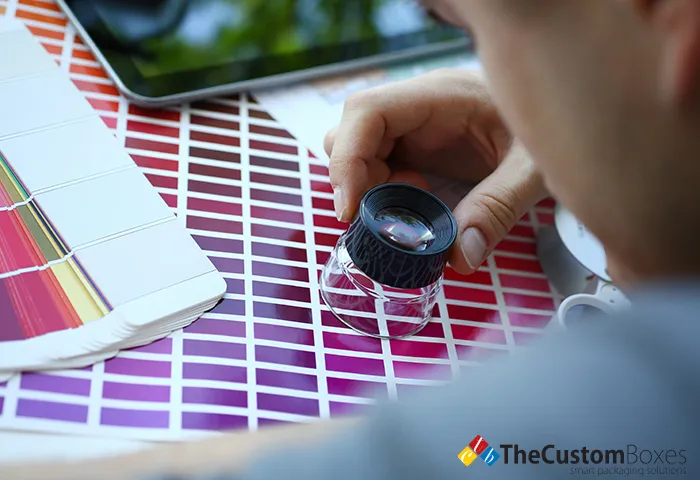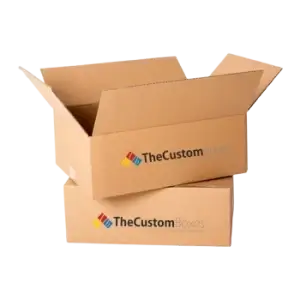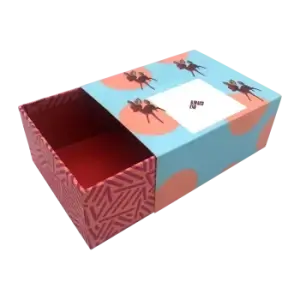RGB Color Model: Understanding
Its Essence And Limitations In Printing
Unleash the power of the RGB color model for screen and digital printing with an understanding of its essence. However, navigate this color system’s limitation in the printing on the paper. RGB stands for red, green, and blue, which combines to create a new range of colors.

The color combination in the printing process is different depending on the medium used. RGB color model is one of the amazing color systems. This method is used to print designs and graphics on electronic and digital displays. In this printing process, three colors are used to create others which are red, green, and blue. This model is used commonly for TV screens, digital cameras, laptops, and computer monitors.
To discuss, what is the significance of the RGB color model and the limitations of this model in printing and packaging designs, we need to understand the basics of the RGB model. Let’s explore together the details of this amazing color model.
What Is The RGB Color Model?
The first thing that we have to explore is what RGB stands for. It is an acronym of three primary colors R for red, G for green, and B for blue. So, this model is performing its function by using only three colors. With the combination of these best RGB colors, we can create as many new colors as you imagine.
At its core, mixing specific amounts of different colors gives birth to a whole new shade. Take yellow, for instance – it comes to life when you blend a bit of red with a touch of green. Of course, it's worth mentioning that this is a simplified explanation. Today's printers and monitors, like artists, are pretty skilled at delicately blending colors to create just the right shade, ensuring that the color models we see are spot-on and true to what we're aiming for.
How Does RGB Work?

In our childhood, we were taught that a magical trio of colors is red, yellow, and blue which combine to create all new colors. However, in the digital world, the phenomenon of printing colors on screen is entirely different. RGB color format is utilized with a mixing of lights. In the RGB system, the spotlight moves to create colors with 0 to 225 intensity. With the combination of cool red-green-blue colors, we can create approximately 16.77 million new colors.
And on our digital screens, the tiniest of dots, and pixels, join forces to create the images we see. Each pixel is like a painter's brushstroke, made up of red, green, and blue light units, working together to craft the vibrant visuals we experience.
What Are The Limitations Of RGB Color Space?
When it comes to bringing digital designs to life in print, there's a color translation dance. You see, the vibrant hues you cook up in RGB color mode on your screen won't necessarily groove the same way on paper. It's all about the color gamut – think of it as the spectrum of colors you can work with.
So, before your digital masterpiece hits paper or packaging, it often takes a detour through the CMYK world. This conversion is like a translator, attempting to get those colors as close as possible to their original screen glory. Working directly in the CMYK color space ensures your artwork mirrors the real deal – or as close as the printing magic can get. This color harmony trick applies whether you're into offset printing, flexographic printing, or the digital printing scene. It's the secret to getting your designs to pop just right in the physical realm.
Why Is The RGB Color Model Unsuitable For Use In Printing?

No worries if you've crafted a vibrant design in the RGB printer – there's a fix for that. Most design programs have this nifty feature that lets you smoothly shift your masterpiece into the CMYK realm. The catch? Well, sometimes the colors might need a little tweak post-conversion to get them singing in harmony with your original RGB vision. It's like a translation process – a bit of color fine-tuning to ensure your design shines just as brightly in the CMYK world as it did in RGB.
Unique RGB Color Combinations
Beyond the familiar red, green, blue, yellow, magenta, cyan, white, and black, there's a wide spectrum of colors that can grace our screens. The secret? It's all about mixing different concentrations of these colors to paint the perfect shade. Picture this: the primary colors—red, green, and blue—each come in six strengths, ranging from 0% to 100%. That's a whopping 216 potential colors in theory.
Yet, reality has a way of tweaking things. Due to hardware limitations, these strengths might be a bit more nuanced, often showing up as 0%, 2%, 10%, 28%, 57%, and 100%. It means that some colors won't be as accurately displayed, except for the eight mentioned earlier, which stand strong at either 0% or 100% strength for each basic color. Thankfully, the tech wizards—programmers and engineers—are always on the lookout for ways to fine-tune the display game. Through research, new tools, and some fancy coding, they're making strides in color correction for computer and TV screens. Exciting as it is, the color model RGB still throws a curveball when it comes to the world of printing and packaging!
Practical Uses Of RGB Printing

1. On Screens
As we chatted earlier, the go-to gig for the RGB color printer is showing off digital product packaging designs and images. Picture it at work in the old-school cathode ray tubes, the sleek LCDs, and the modern LED displays – the ones we're all cozying up to on our TVs and computer monitors nowadays. Each tiny pixel on these screens plays with these colors to paint the pictures and designs we know and love. And guess what? This color model charm doesn't stop there; it's also the backstage hero in the world of component video display signals.
2. On Cameras
Digital cameras are like color maestros, relying heavily on the RGB color system through nifty image sensors like CMOS or CCD. In today's camera tech, RGB sensors play detective, figuring out just the right exposure for your snapshots, ensuring those Instagram-worthy pics.
Now, while RGB has been the unsung hero behind our tech marvels, it's not the go-to for printing and packaging. Trust me, you don't want your colors going on a wild ride, turning dull and strange. That's where the CMYK color system swoops in, promising top-notch results for your custom packaging and prints. It's like the VIP treatment for your visuals!
Bottom Lines
In a nutshell, the RGB color model is the digital artist's palette, weaving its magic on screens and cameras. Its trio of primary colors—red, green, and blue—mix and mingle to create the vibrant visuals we see on our digital displays. However, when it comes to printing and packaging, this color model takes a backstage seat. The conversion dance to CMYK ensures that what you envisioned on your screen translates accurately to paper, overcoming the limitations of the red-green-blue model in the physical realm.
The Custom Boxes have advanced printing technology and a talented team to ensure the right use of color models. Keep following us to learn more.







